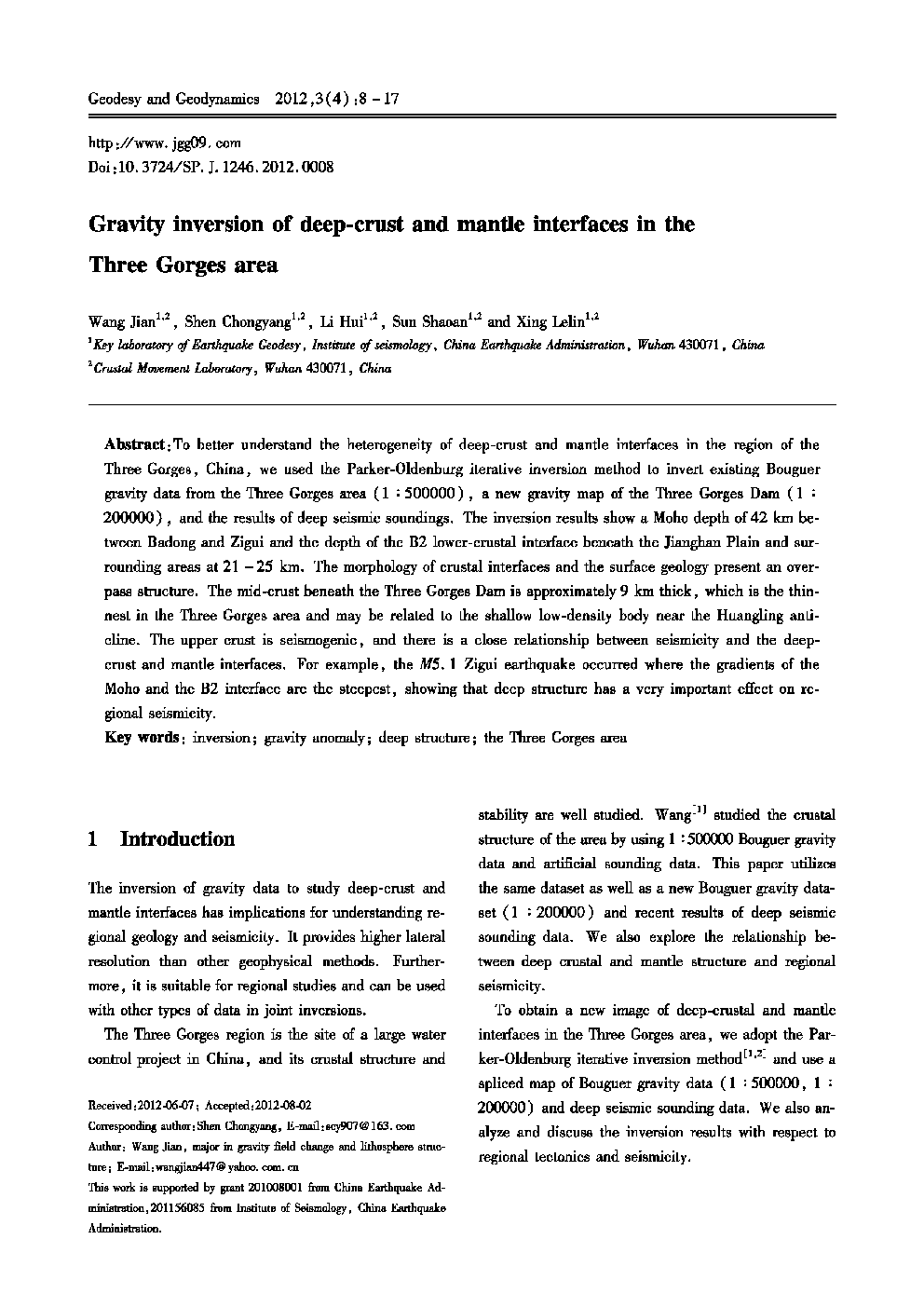| Article ID | Journal | Published Year | Pages | File Type |
|---|---|---|---|---|
| 4683607 | Geodesy and Geodynamics | 2012 | 11 Pages |
Abstract
To better understand the heterogeneity of deep-crust and mantle interfaces in the region of the Three Gorges, China, we used the Parker-Oldenburg iterative inversion method to invert existing Bouguer gravity data from the Three Gorges area (1 : 500000), a new gravity map of the Three Gorges Dam (1 : 200000), and the results of deep seismic soundings. The inversion results show a Moho depth of 42Â km between Badong and Zigui and the depth of the B2 lower-crustal interface beneath the Jianghan Plain and surrounding areas at 21-25Â km. The morphology of crustal interfaces and the surface geology present an overpass structure. The mid-crust beneath the Three Gorges Dam is approximately 9Â km thick, which is the thinnest in the Three Gorges area and may be related to the shallow low-density body near the Huangling anticline. The upper crust is seismogenic, and there is a close relationship between seismicity and the deep-crust and mantle interfaces. For example, the M5. 1 Zigui earthquake occurred where the gradients of the Moho and the B2 interface are the steepest, showing that deep structure has a very important effect on regional seismicity.
Related Topics
Physical Sciences and Engineering
Earth and Planetary Sciences
Earth-Surface Processes
Authors
Wang Jian, Shen Chongyang, Ii Hui, Sun Shaoan, Xing Lelin,
